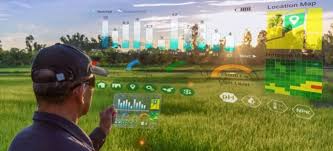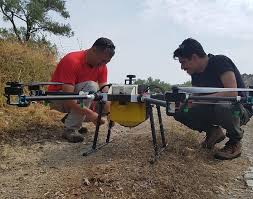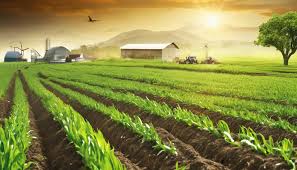Agriculture is a crucial sector that impacts economies, societies, and the environment worldwide. In recent years, global agricultural trends have evolved significantly due to various factors, including population growth, technological advancements, and climate change.
Understanding these trends is essential for farmers, policymakers, and consumers to navigate the challenges and opportunities that lie ahead in the agricultural landscape.
Emerging Technologies in Agriculture
Emerging technologies are transforming the way agriculture is practiced, increasing efficiency, productivity, and sustainability.
1. Precision Agriculture: This approach uses data analytics, GPS, and IoT (Internet of Things) devices to monitor and manage crops more effectively. Farmers can make informed decisions on irrigation, fertilization, and pest control, leading to higher yields and lower resource use.
2. Drones and Aerial Imaging: Drones equipped with cameras and sensors provide valuable insights into crop health, soil conditions, and overall farm management. They help farmers identify problem areas and optimize their resources.
3. Biotechnology: Advances in biotechnology, including genetic modification and CRISPR technology, allow for the development of crops that are more resistant to diseases, pests, and extreme weather conditions. These innovations can lead to higher productivity and reduced chemical use.
4. Vertical Farming: This method involves growing crops in stacked layers, often in controlled indoor environments. Vertical farming optimizes space and water use, making it a viable solution for urban agriculture.
5. Blockchain Technology: Blockchain enhances transparency and traceability in the agricultural supply chain. It allows consumers to verify the origin of their food, ensuring that it meets safety and sustainability standards.
Sustainable Farming Practices
Sustainable farming practices aim to meet the needs of the present without compromising the ability of future generations to meet their own needs. These practices focus on environmental health, economic viability, and social equity.
1. Crop Rotation: This practice involves alternating different crops in the same field over time. Crop rotation improves soil health, reduces pest and disease cycles, and enhances biodiversity.
2. Agroecology: This holistic approach integrates ecological principles into agricultural practices. Agroecology promotes biodiversity, soil health, and the use of natural resources while reducing reliance on synthetic inputs.
3. Conservation Tillage: Reducing or eliminating tillage helps preserve soil structure, prevent erosion, and improve water retention. It also enhances soil organic matter and reduces greenhouse gas emissions.
4. Integrated Pest Management (IPM): IPM combines biological, cultural, and chemical practices to manage pests in a sustainable way. It minimizes pesticide use while maximizing crop protection.
5. Organic Farming: Organic farming avoids synthetic chemicals and emphasizes natural processes. It promotes biodiversity, soil health, and environmentally friendly practices, catering to a growing market demand for organic products.
Climate Change and Its Impact on Agriculture

Climate change poses significant challenges for agriculture, affecting crop yields, water availability, and food security.
1. Changing Weather Patterns: Increased temperatures, altered rainfall patterns, and extreme weather events such as droughts and floods can disrupt agricultural production. Farmers must adapt to these changes to maintain yields.
2. Water Scarcity: Climate change affects water availability for irrigation, leading to competition among agricultural, industrial, and domestic users. Efficient water management practices are essential for sustainable agriculture.
3. Pest and Disease Pressure: Warmer temperatures can lead to increased pest and disease pressure, threatening crop yields. Farmers may need to adopt integrated pest management strategies to mitigate these risks.
4. Soil Health Decline: Climate change can exacerbate soil degradation, leading to reduced fertility and increased erosion. Sustainable practices, such as cover cropping and organic amendments, can help restore soil health.
5. Food Security Threats: The combined effects of climate change can lead to reduced food production, threatening global food security. It is crucial to implement adaptive strategies to ensure a stable food supply.
Global Supply Chain Dynamics
The global agricultural supply chain is complex and involves multiple actors, including farmers, processors, distributors, and consumers. Understanding these dynamics is crucial for ensuring food security and sustainability.
1. Global Trade: Agricultural products are traded globally, allowing countries to access a variety of foods and resources. Trade policies, tariffs, and trade agreements can significantly impact agricultural markets.
2. Supply Chain Disruptions: Events such as natural disasters, pandemics, and geopolitical tensions can disrupt supply chains, leading to food shortages and price volatility. Resilience in the supply chain is essential for stability.
3. Technological Innovations: Advancements in logistics, transportation, and communication technologies have improved the efficiency of agricultural supply chains. These innovations enhance traceability and reduce waste.
4. Consumer Preferences: Changing consumer preferences for organic, local, and sustainable products influence agricultural production and marketing strategies. Farmers must adapt to meet evolving consumer demands.
5. Sustainability and Ethics: There is growing awareness of the environmental and ethical implications of food production. Consumers increasingly demand transparency and sustainability in the agricultural supply chain.
Read Also: Recommended Number of Ruminant Animals per Housing Unit for Fattening
Changing Consumer Preferences

Consumer preferences have shifted significantly in recent years, affecting agricultural production and marketing strategies. Understanding these changes is crucial for farmers and businesses.
1. Demand for Organic Products: Many consumers prefer organic foods due to perceived health benefits and environmental concerns. This trend has led to increased production of organic crops and livestock, promoting sustainable farming practices.
2. Interest in Local and Sustainable Foods: Consumers are increasingly seeking locally sourced products, supporting local economies and reducing the carbon footprint associated with transportation. Farmers’ markets and community-supported agriculture (CSA) programs are gaining popularity.
3. Focus on Health and Nutrition: There is a growing awareness of the importance of healthy eating. Consumers are looking for nutrient-dense foods, leading to increased demand for fruits, vegetables, and whole grains.
4. Transparency and Traceability: Modern consumers want to know where their food comes from and how it is produced. This demand for transparency is driving farmers to adopt practices that enhance traceability in the supply chain.
5. Plant-Based and Alternative Proteins: The rise of plant-based diets has created a demand for alternative protein sources, such as legumes and meat substitutes. This shift is influencing crop production and livestock management practices.
Labor Challenges in Agriculture
Labor shortages in agriculture present significant challenges for farmers and the industry as a whole. Several factors contribute to this issue.
1. Aging Workforce: Many farmers are reaching retirement age, and fewer young people are entering the agricultural workforce. This demographic shift poses challenges for maintaining productivity.
2. Seasonal Labor Demand: Agriculture often requires a large number of seasonal workers for planting and harvesting. Fluctuations in labor availability can impact crop yields and profitability.
3. Immigration Policies: Stricter immigration policies can reduce the availability of migrant labor, which many farms rely on for critical tasks. This can lead to labor shortages and increased production costs.
4. Wages and Working Conditions: To attract and retain workers, farms need to offer competitive wages and improve working conditions. Investing in labor rights and safety can enhance workforce stability.
5. Automation and Technology: The integration of technology, such as robotics and automated systems, can help mitigate labor shortages. However, the upfront investment in technology can be a barrier for some farmers.
The Role of Policy and Regulation
Government policies and regulations play a crucial role in shaping the agricultural landscape. Understanding these policies is essential for navigating the industry.
1. Subsidies and Support Programs: Governments often provide financial assistance to farmers through subsidies and support programs. These initiatives can help stabilize farm income and encourage sustainable practices.
2. Food Safety Regulations: Food safety regulations ensure that agricultural products meet safety standards for consumers. Compliance with these regulations is vital for maintaining public trust in the food supply.
3. Environmental Regulations: Policies aimed at protecting the environment, such as restrictions on pesticide use and conservation programs, impact farming practices. Farmers must adapt to these regulations while maintaining productivity.
4. Trade Policies: International trade agreements can affect agricultural markets by influencing tariffs, export opportunities, and competition. Understanding trade policies is crucial for farmers engaged in global markets.
5. Research and Development Funding: Government investment in agricultural research and development can lead to innovations that enhance productivity and sustainability. Supporting research initiatives is vital for addressing future challenges.
Read Also: Recommended Number of Ruminant Animals per Housing Unit for Fattening
Innovations in Pest and Disease Management

Innovations in pest and disease management are essential for sustainable agricultural practices. These advancements help farmers protect crops while minimizing environmental impact.
1. Integrated Pest Management (IPM): IPM combines biological, cultural, and chemical methods to manage pests. This holistic approach reduces reliance on pesticides while maintaining crop health.
2. Biological Control: Utilizing natural predators and parasites to control pest populations is an eco-friendly strategy. This method promotes biodiversity and reduces chemical inputs.
3. Smart Technologies: Technologies such as drones and sensors allow for precise monitoring of pest populations. This data-driven approach enables farmers to make informed decisions on pest management.
4. Genetic Engineering: Developing genetically modified (GM) crops with built-in resistance to pests and diseases can reduce the need for chemical treatments. However, consumer acceptance and regulatory challenges remain.
5. Data Analytics: Analyzing data from various sources helps farmers predict pest outbreaks and optimize management strategies. Data-driven decision-making enhances the effectiveness of pest control measures.
Future Directions and Opportunities in Agriculture
The future of agriculture is filled with opportunities and challenges that require innovative solutions and collaborative efforts.
1. Sustainable Practices: Emphasizing sustainability will be critical for addressing environmental concerns. Practices such as agroecology, organic farming, and regenerative agriculture can enhance resilience and productivity.
2. Technological Advancements: Continued investment in agricultural technology will drive innovation. Precision farming, biotechnology, and automation will play vital roles in improving efficiency and reducing resource use.
3. Climate Resilience: Developing climate-resilient crops and practices will be essential in adapting to changing weather patterns. Farmers must embrace strategies that mitigate climate risks and enhance food security.
4. Consumer Engagement: Engaging consumers in sustainable practices and educating them about food production can foster support for local and environmentally friendly options. Building strong relationships with consumers will enhance market opportunities.
5. Global Collaboration: Addressing global agricultural challenges requires collaboration among governments, NGOs, and the private sector. Sharing knowledge and resources will be vital for achieving sustainable agricultural development.
Understanding global agricultural trends is essential for addressing the challenges of food production in a rapidly changing world.
Emerging technologies and sustainable practices offer innovative solutions for increasing efficiency and resilience in agriculture.
At the same time, climate change and global supply chain dynamics pose significant challenges that require adaptation and collaboration.
By embracing these trends and fostering sustainable practices, the agricultural sector can ensure food security and contribute positively to the environment and society.
Do you have any questions, suggestions, or contributions? If so, please feel free to use the comment box below to share your thoughts. We also encourage you to kindly share this information with others who might benefit from it. Since we can’t reach everyone at once, we truly appreciate your help in spreading the word. Thank you so much for your support and for sharing!
Read Also: 4 Steps to help an Orange Tree Produce Sweet Oranges
Frequently Asked Questions
We will update this section soon.

